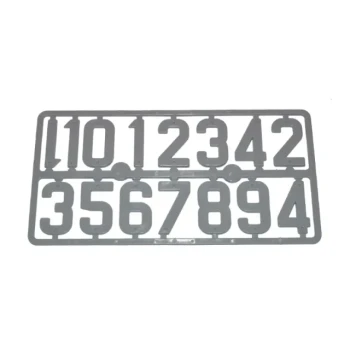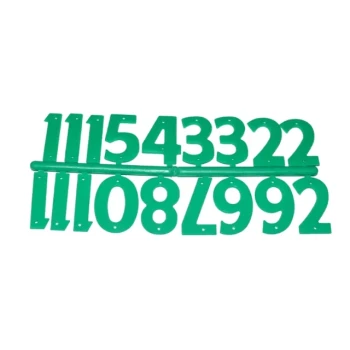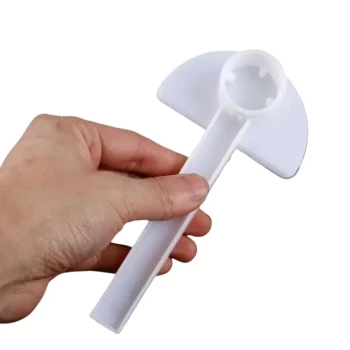At its core, requeening a colony with a nucleus colony (nuc) is the fastest way to solve a queen problem. This method provides the hive with an immediate, proven laying queen and a significant boost of brood and worker bees, bypassing the typical weeks-long delay and uncertainty associated with other requeening methods.
Requeening with a nuc isn't just about replacing a queen; it's about transplanting a functioning "mini-colony" to instantly revitalize a failing or queenless hive, ensuring its immediate survival and rapid return to productivity.

The Immediate Impact on Colony Population
When a hive is queenless or has a failing queen, its population enters a state of decline. A nuc directly counteracts this by providing a complete revitalization package.
Eliminating the Broodless Period
A queenless colony has no new eggs being laid. This creates a "brood break" that results in a dwindling population of worker bees as older bees die off.
Introducing a nuc provides frames with brood in all stages—eggs, larvae, and capped pupae. This ensures a continuous emergence of new bees, instantly restarting the colony's growth cycle.
A Surge of New Workers
The frames from the nuc don't just contain future bees; they contain capped brood that will begin emerging within days.
This provides an immediate surge in the workforce for critical tasks like foraging, nursing, and hive defense, directly reversing the population decline.
A Proven, Laying Queen
Unlike introducing a new queen in a cage, a nuc comes with a queen who is already accepted, laying, and has a demonstrated good brood pattern.
This eliminates the risk of the colony rejecting the new queen or discovering that she is a poor layer after weeks of waiting.
Restoring Colony Stability and Health
A strong queen is the heart of the colony, and her presence dictates the hive's overall stability and behavior. A nuc installs a high-performing queen and the resources to support her immediately.
The Power of Queen Pheromones
Young, prolific queens, like those in a quality nuc, secrete high levels of pheromones.
These chemical signals are critical for organizing the colony. They stimulate foraging, suppress the urge to swarm, and prevent worker bees from starting to lay unfertilized eggs.
Boosting Hive Morale and Defense
A queenless colony is often agitated and disorganized. The introduction of a queen and her familiar brood and attendants from the nuc has a calming effect.
This restored stability, combined with the influx of new bees, makes the colony better equipped to defend itself against pests and robbers.
Understanding the Trade-offs
While powerful, using a nuc to requeen is a strategic decision with specific considerations. It is not always the right choice for every situation.
Cost and Availability
Nucs are significantly more expensive than purchasing a single mated queen. They represent a larger investment of resources.
Furthermore, high-quality nucs are often only available seasonally and must be sourced from a reputable local supplier.
Risk of Disease and Pest Transmission
You are not just introducing bees; you are introducing frames of comb, pollen, and honey from another apiary.
It is absolutely critical to source your nuc from a trusted beekeeper with a proven track record for disease and pest management to avoid introducing issues like Varroa mites or foulbrood into your operation.
Not a Cure for Collapse
A nuc is a powerful boost for a queenless or weak colony, but it cannot save a hive that is already collapsing from a severe pest infestation, disease, or pesticide exposure.
The nuc provides the manpower for recovery, but the underlying problem must be diagnosed and solved concurrently.
Making the Right Choice for Your Goal
Your requeening strategy should align with your specific goals for the colony and your apiary.
- If your primary focus is rapid recovery and honey production: Requeening with a nuc is the superior choice, as it minimizes downtime and gets the colony back to full strength faster than any other method.
- If your primary focus is cost-effectiveness: Introducing a single, caged mated queen is a cheaper alternative, but you must accept the 3-4 week delay before new workers emerge and the higher risk of queen rejection.
- If your primary focus is VSH genetics or emergency requeening: Allowing a strong colony to raise its own queen is free but is the slowest and riskiest option, carrying the chance of the new queen failing to mate and return.
Ultimately, understanding the role of a nuc empowers you to act decisively to ensure the health and productivity of your colonies.
Summary Table:
| Advantage of Using a Nuc | Key Benefit |
|---|---|
| Immediate Laying Queen | Eliminates waiting period and risk of rejection. |
| Instant Brood Boost | Ends the broodless period, ensuring continuous population growth. |
| Surge in Worker Bees | Provides an immediate workforce for foraging, nursing, and defense. |
| Restored Hive Stability | Queen pheromones calm the colony and suppress swarming instincts. |
Ensure your apiary's success with reliable, high-quality supplies. Requeening with a nuc is a powerful strategy for commercial beekeepers and distributors. HONESTBEE supplies the durable equipment and wholesale-priced supplies you need to support strong, productive colonies. Contact our team today to discuss your beekeeping supply needs and keep your operations thriving.
Visual Guide

Related Products
- 4 Frame Plastic Nuc Boxes for Beekeeping Bee Nuc Box
- HONESTBEE Professional Long Handled Hive Tool with Precision Cutting Blade
- Professional Hive Front Entrance Bee Feeder
- Professional Multi-Function Stainless Steel Hive Tool
- Boardman Entrance Bee Feeder Durable Galvanized Steel and Wood Construction for Beekeeping
People Also Ask
- How does colony growth differ between nucs and bee packages? A Guide to Faster Beehive Buildup
- What are the benefits of maintaining a nuc in beekeeping? Gain Control and Resilience for Your Apiary
- What are the advantages of choosing a nucleus hive over a package of bees? Get a Head Start with a Pre-Established Colony
- What are nucleus colonies (nucs) and how do they compare to full-size Langstroth colonies?
- What is the recommended time of year to move bee nucs to a 10-frame hive? A Guide for Apiary Success



















